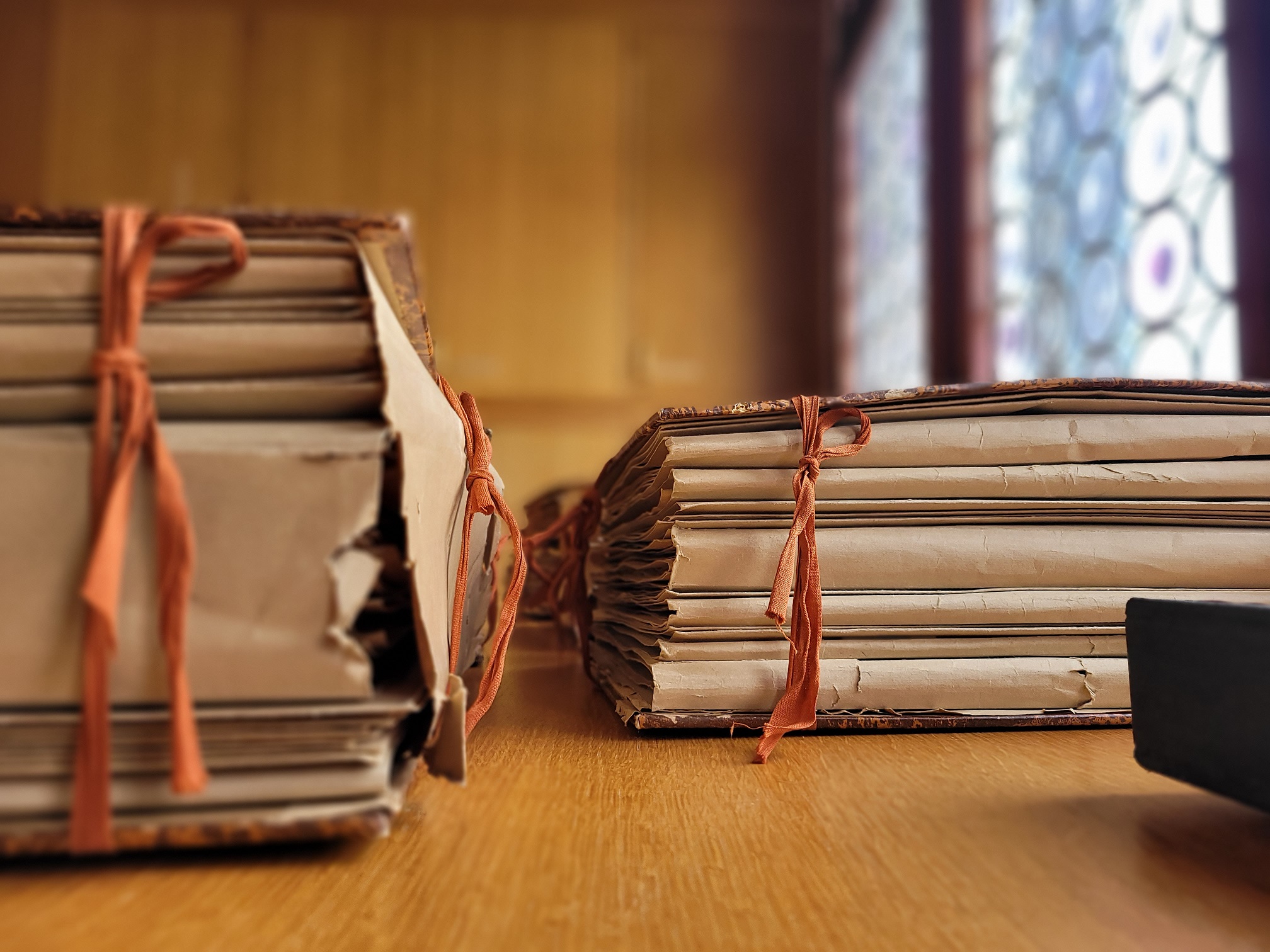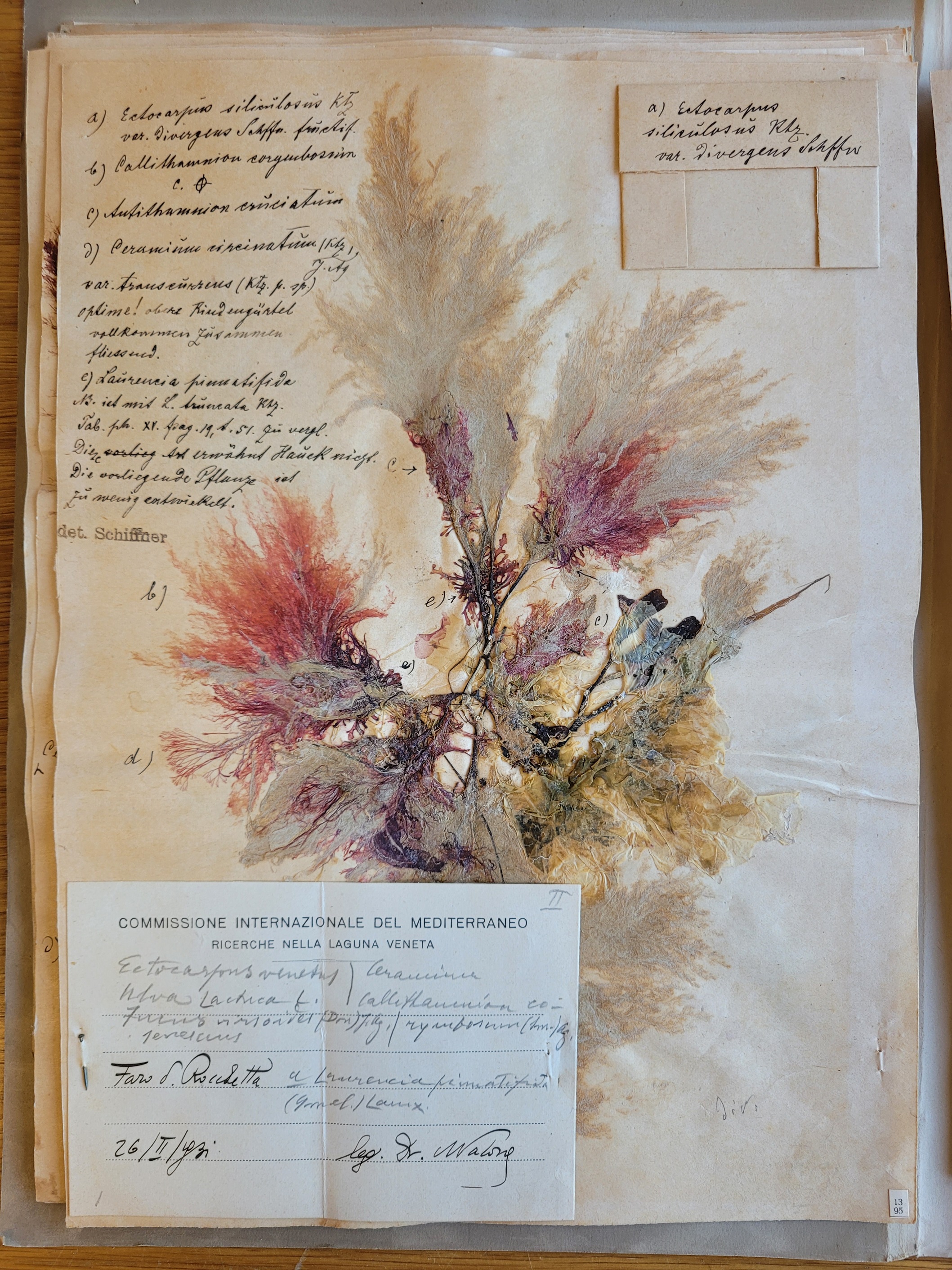History and description
The Natural History Museum "Giancarlo Ligabue" hosts the most important collection of algae collected in the Venice Lagoon in the first half of the 20th century, the Vatova-Schiffner herbarium.
 The collection is the result of a research campaign on the algal population of the lagoon conducted by Aristocle Vatova, a marine biologist who worked for a long time at the Institute of Marine Biology in Venice. The study was commissioned to him by the International Commission for the Scientific Exploration of the Mediterranean as part of a broader project to develop the monographic work 'The Venice Lagoon'; once he completed the chapter dedicated to algae (vol. III, part V, tome IX, fasc. I; 1938), Vatova donated the collection to the Museum at the end of the 1930s.
The collection is the result of a research campaign on the algal population of the lagoon conducted by Aristocle Vatova, a marine biologist who worked for a long time at the Institute of Marine Biology in Venice. The study was commissioned to him by the International Commission for the Scientific Exploration of the Mediterranean as part of a broader project to develop the monographic work 'The Venice Lagoon'; once he completed the chapter dedicated to algae (vol. III, part V, tome IX, fasc. I; 1938), Vatova donated the collection to the Museum at the end of the 1930s.
The algae were collected between 1930 and 1932 from seventy sampling sites in the Lagoon, as well as from five locations in the Po Delta sampled for comparison. Vatova conducted the sampling, assisted on some outings by the distinguished botanist Augusto Béguinot. The identification of the samples was done by Victor Schiffner, one of the most eminent scholars of cryptogams of the time. However, initially, the study of the material was entrusted to Achille Forti, a phycologist from Verona and a member of several scientific institutions, including the Venetian Institute of Sciences, Letters, and Arts.
 The collection consists of 1,406 loose and numbered sheets grouped in folders corresponding to genera, species, varieties, and forms, all enclosed within six volumes bound in cardboard with ribbons.
The collection consists of 1,406 loose and numbered sheets grouped in folders corresponding to genera, species, varieties, and forms, all enclosed within six volumes bound in cardboard with ribbons.
Each sheet contains one or more dried specimens and sometimes one or more envelopes containing microscopic preparations on slides or mica, or small portions of thallus. The specimens are coupled with handwritten labels, either stapled or glued to the sheets, which report the scientific name, the location and date of collection, the collector, and the author of the identification; sometimes, there are also notes regarding the presence of reproductive structures or brief taxonomic annotations. The sheets oftern host handwritten notes similar to those written on the labes, as well as names of taxa that were presumably identified later.
Among the specimens there are several dozen types, i.e. specimens on which Schiffner based his descriptions of numerous new species, varieties, and forms; these precious specimens are coupled with handwritten original diagnoses in German or Latin.
The collection is enriched by the 35 original photographic plates published in the Monograph: a total of 205 images, created by Vatova himself to represent a selection of significant specimens and some microscopic preparations.